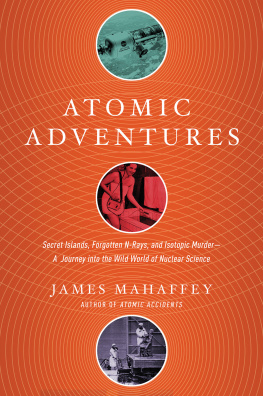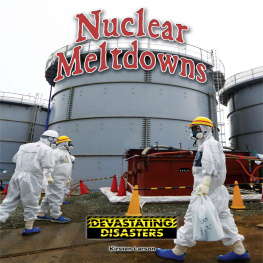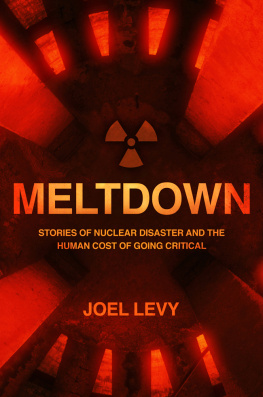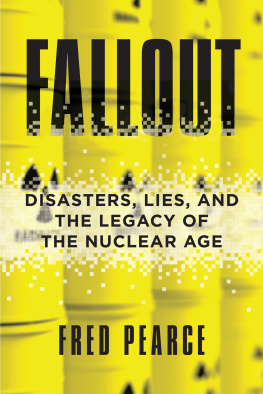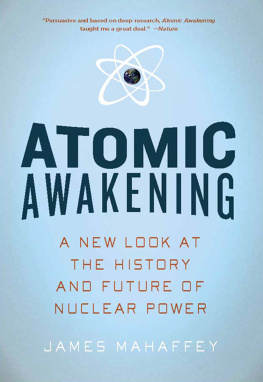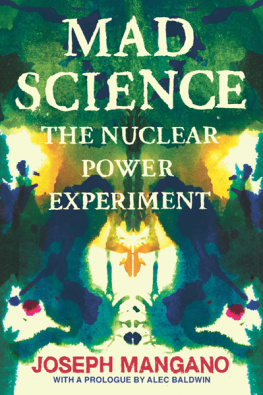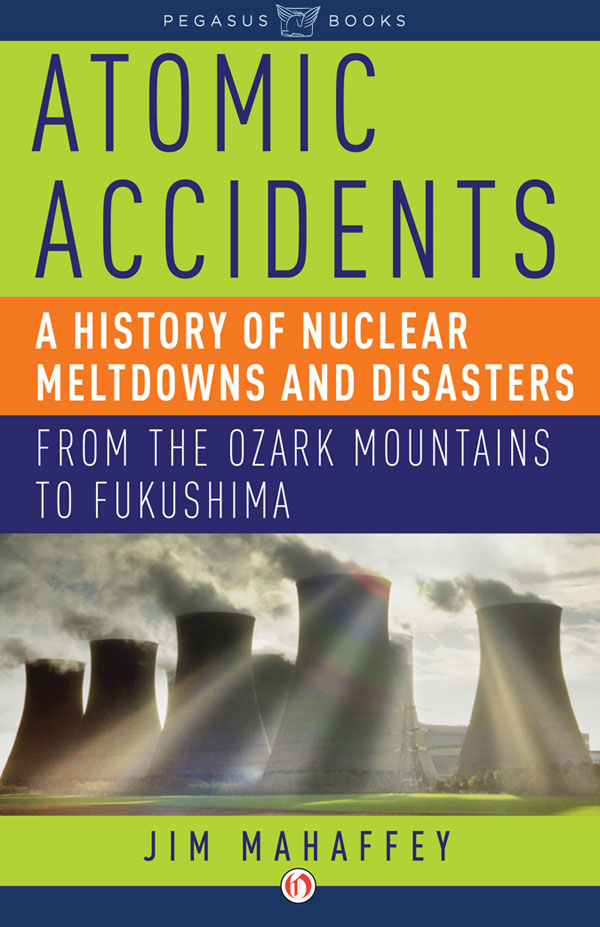All rights reserved, including without limitation the right to reproduce this book or any portion thereof in any form or by any means, whether electronic or mechanical, now known or hereinafter invented, without the express written permission of the publisher.
Distributed by Open Road Integrated Media, Inc.
345 Hudson Street
New York, NY 10014
www.openroadmedia.com
AUTHORS NOTE
A TRIUMPH OF SOVIET TECHNOLOGY
Nuclear engineers love and admire hydroelectric power. Its perfectly clean. It makes no smoke, no carbon monoxide, no radioactive waste, no toxic exhaust or lingering byproduct of any kind. Unlike nuclear power, its very simple. Dam up a river. Let the water from the top of the resulting lake fall through a pipe, gain energy, and spin a turbine. Connected directly to the turbine shaft, without any gears or transmission, is a multi-pole electrical generator. Three wires emerge from the side of the generator. Connect those to the transformer yard, and youre sending electricity to paying customers 24 hours a day, or as long as there is water in the lake.
It is shockingly quiet on the turbine deck. The spinning machinery, usually covered with ceramic tiles made in subdued pastel colors or mounted flush with the floor, makes a high-pitched but subdued whine. The walls tremble, but only slightly, sometimes just beyond perception. The deck is spotlessly clean, and above, looking down on the machinery, is the glassed-in control room. Banks of instruments read out the status of the turbines, which is invariably good. Being a hydro-plant operator has got to be a boring job. You sit there as the generators go round and round, decade after decade, and the silt slowly builds up at the base of your dam. Excitement is when water starts to trickle down where it isnt supposed to on the face of the dam, or a big snow-melt upstream has to be diverted over the spillway, but aside from that its fairly dull. If all the electrical power could be generated with hydro dams, then the world would be a cleaner, calmer place.
There are many fine hydroelectric dams in the United States, each demonstrating the American ability to bend nature to our needs with well-thought-out engineering practice and the skill necessary to build large things. In 1961 the United States and the Soviet Union were engaged in an all-out war. It was a cold war, in which the purpose was not to see how many of the other side we could kill but to prove who had the superior experimental economic system. It was an American form of capitalism against a Russian form of communism, and the battles raged on many fronts. The Soviets had already cleaned our plow in the race for manned space flight, putting Vostok 1 with Yuri Gagarin into orbit on April 14. We were falling way behind.
Thinking to show the U.S., which had built the magnificent Hoover Dam in Nevada, how to really build a hydroelectric plant, the Soviet Union decided to construct the worlds largest reservoir to produce an impressive 6.4 billion watts of power using a line of ten turbo-generators. Work began to build an enormous dam, 3,497 feet wide and 807 feet high, across the Yenisei River near Sayanogorsk in Khakassia. The Sayano-Shushenskaya Hydro Power Plant took 17 years to build. This single dam generated one tenth of the power used in Siberia, and 70 percent of it was used to smelt aluminum. In 2006 production peaked, and the dam produced 26.8 trillion watt-hours of electricity. It was the sixth largest hydroelectric plant in the world, and it was built to withstand a Richter 8.0 earthquake. It was listed in the Guinness Book of World Records as the sturdiest dam in existence.
The water intake pipes on a dam are called penstocks, which is a carryover from the days of wooden water wheels. The sieve at the intake that keeps floating stuff like canoes or swimming bears out of the penstocks is the trash rack. The rotor, or the part of the turbine that spins, is called the runner, and it is hit with water from all sides. The force of the water and therefore the power that turns the generator is controlled precisely by hydraulically actuated wicket gates encircling the runner.
The turbine hall was magnificent, finished in white with gray and sky blue accents, with a curved picture window a couple of stories tall forming the front wall and looking out over the gently flowing Yenisei river, reformed from the turbine exhausts into an idyllic, park-like setting. An extremely large traveling crane, capable of easily picking up a 156-ton turbine runner, ran the length of the hall on rails in the ceiling.
On the morning of August 17, 2009, Unit 2 was the master turbine, setting the pace for the others to follow and running at a precise 142.86 revolutions per minute. Each turbine had its own penstock down from the top of the dam and its wicket gates constantly followed the directions from Unit 2, but there were only nine turbines running that morning. Unit 6 was down for maintenance, and an unusually large number of workers were down on the deck worrying over it.
At 8:13 local time something in the water, probably a loose log, made it through the trash rack at the top of the dam, fell 636 feet through the Unit 2 penstock, and lodged in the runner. Not good. In a fraction of a second, the log had spun around and slapped shut all the wicket gates, and the turbine jerked to a low speed. The turbines were extremely smooth and stable in two conditions: running at full speed and standing still. In any other condition while connected to the electrical grid, they would vibrate. Unit 2, the master turbine, suddenly lost speed as its water was cut off. It was no longer generating power, and was instead pulling power out of the other generators, acting as an electric motor. Unit 2 started hopping up and down, wrestling with its sudden change of identity and status. The bolts holding the top on Unit 2 blew off, and the 900-ton turbo-generator jumped out of the floor. Suddenly having no speed control from Unit 2, Units 7 and 9 quickly reached runaway speed and started flinging parts through what was left of the picture window. The Unit 2 penstock collapsed and destroyed everything around it.
Having no penstock to contain it, Lake Sayano-Shushenskoe started emptying into the powerhouse. Units 3, 4, and 5 were still generating power, but they could not do it correctly while under water. The main transformer exploded, sending 40 metric tons of cooling oil, mixed with highly toxic polychlorinated biphenyls, down the Yenisei. The overhead crane wrenched loose from its rails and crashed through the floor, followed by the ceiling caving in on the only units left running. In a matter of seconds, a sweetly running hydroelectric plant was reduced to a twisted mass of water-soaked wreckage. Pieces were scattered hundreds of feet away, and the once-beautiful powerhouse looked as if it had been crushed under a giants foot and then ground up just to make a point. After weeks of searching, the remains of 74 workers were found in the ruins. One was never found, making the toll 75.


